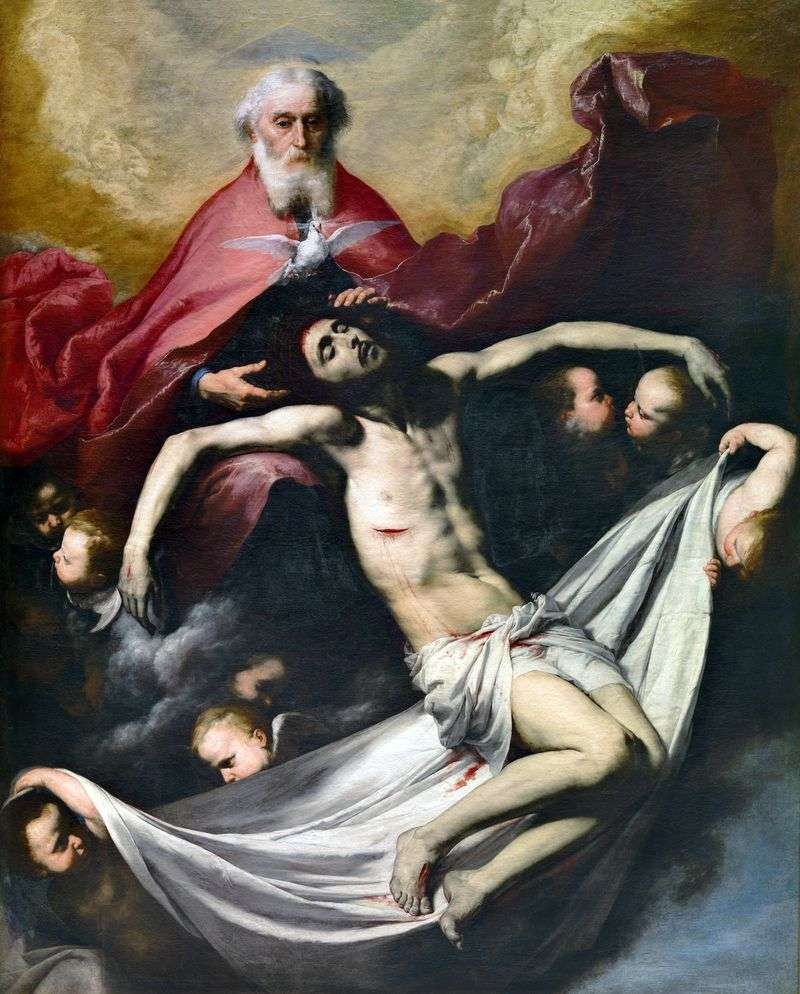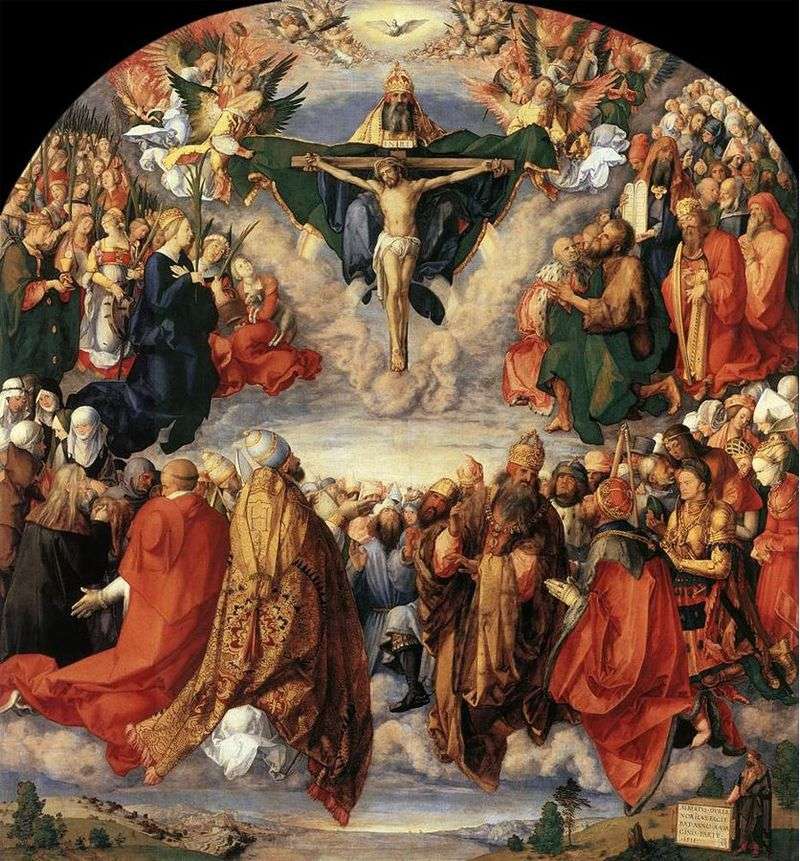
The picture “Trinity” was written by El Greco in 1577, and belongs to one of the first works of the artist, created after his move to Spain. It was originally created for the attic of the main altar of the church of Santo Dmingo spruce Antiguo, and was located the second tier above the grandiose canvas “Ascension of Mary”. This work provided considerable glory to a young foreigner in Toledo, an archaic provincial town.
“Trinity” El Greco rather inherits the artistic traditions of Rome than Venice. Her expression is close to Mikaelandzhalovskaya “Drink.” Although the general scheme is borrowed from Durer’s engraving of the same theme.
God the Father supports the lifeless body of His Son, a dove hovers over them – a symbol of the Holy Spirit. The Divine Trinity is surrounded by a host of angels. The head of God the Father is crowned with a tiara. His sorrowful face is turned to the Son, He seems to shield His figure from the angels. The golden cloak enveloping the divine figure strengthens the impression of detachment.
Already in this work you can observe the elongated proportions of figures, broken postures, emotional tension, all that has become stronger in the works of later periods of the artist’s work.
The solemn, balanced composition of the “Trinity” continues the ascending movement of the scene “Ascension of Mary”, located under it. However, in the upper picture the movement slows down, and finally ends on the broken line of the supported shoulders of Christ. The nude figure of the Son of God is even more reminiscent of the works of Michelangelo, especially close to the drawing of “Pieta” for Vittoria Colonna. In later works, El Greco depicts figures as freely as draperies. However, in the “Trinity” is felt the materiality of the dead body of Christ.
It seems that His curved figure has a significant weight. This tragic expressiveness of the image of Christ, the colors characteristic of the Mannerists, the free arrangement of the figures, gives the work together with integrity, high pathos influence. Despite the fact that the artist has repeatedly liked to return to his favorite themes in the works, it is not known a single picture devoted to the theme of the “Trinity.”
 The Position of Christ in the Coffin by El Greco
The Position of Christ in the Coffin by El Greco Holy Trinity by Masaccio
Holy Trinity by Masaccio Trinity by Masaccio
Trinity by Masaccio The Descent of the Holy Spirit by El Greco
The Descent of the Holy Spirit by El Greco The Holy Apostles Peter and Paul by El Greco
The Holy Apostles Peter and Paul by El Greco The Holy Apostle Andrew by El Greco
The Holy Apostle Andrew by El Greco Trinity by Husepe Ribera
Trinity by Husepe Ribera Worship of the Holy Trinity by Albrecht Durer
Worship of the Holy Trinity by Albrecht Durer